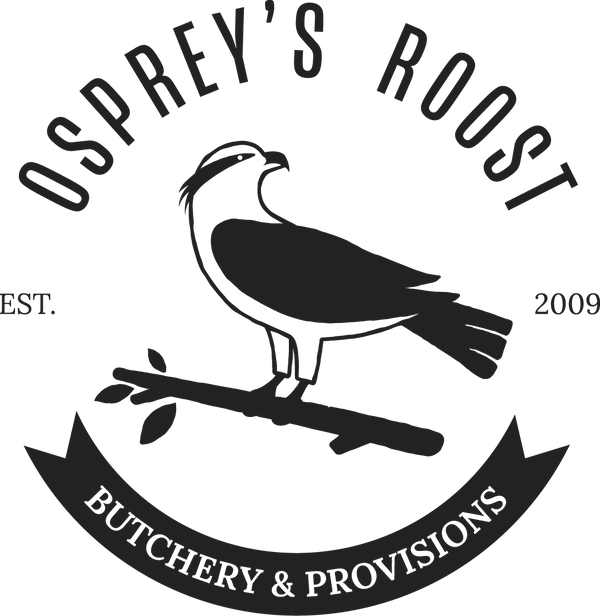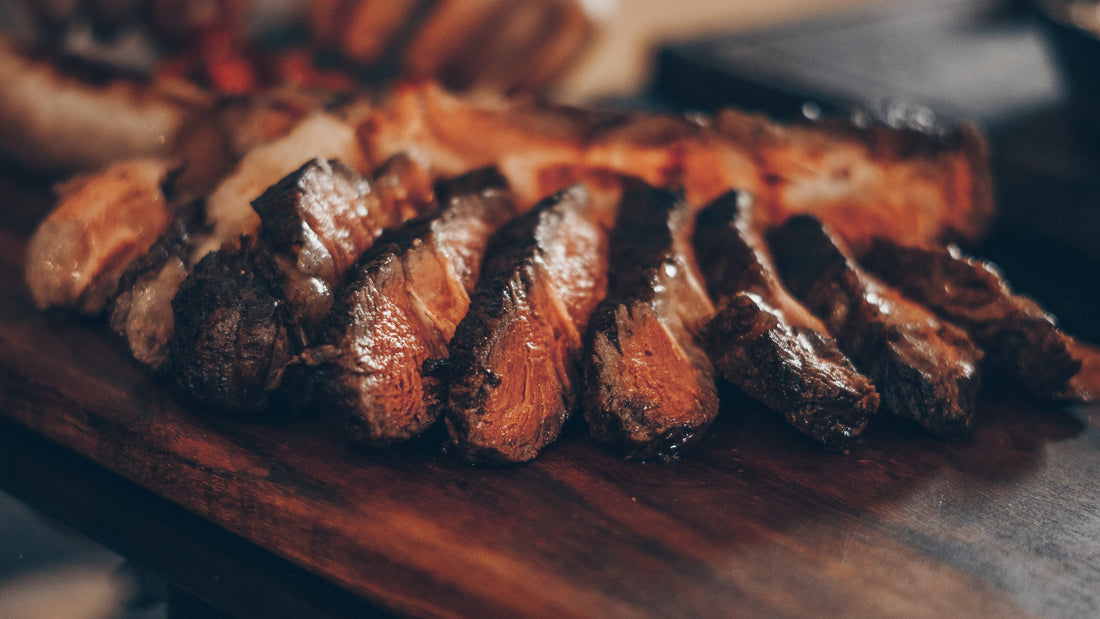One of the nice things about cooking a steak for yourself is the minimal prep work: many of them only need a little salt to bring out their natural flavour, and that’s it! But that makes your choice of cooking method all the more important – you want your steak to have the perfect texture and level of done-ness to enjoy that bold grass-fed beef flavour. You could sous-vide, you could put it in the oven, you could sear it quickly in a hot pan: how to decide on a method? As long as you’ve got some time on your hands, the reverse sear is a method I love for its even cooking and tender texture.
How thick is your steak? If you’re cooking up something like a Flat Iron, which is long but quite thin, searing is the method for you. You need more control over immediate temperature changes with a thinner steak. Since the steak will cook quickly no matter what, it’s best to control how done you want the steak by lowering or increasing the burner heat and cooking time as it sears.
If you’ve got a two-inch-thick Prime Rib or a juicy Tri-Tip Steak, it’s a different matter. Searing thicker steaks works just fine, but you’ll end up with a band of well-done meat surrounding the center of the steak no matter the doneness because that meat is in contact with the hot pan through the whole cook time. Instead, try a reverse-sear:
You will need:: Baking pan, aluminum foil, meat thermometer (instant read or probe is best) frying pan, high-heat oil (Beef Tallow works great here) and seasoned steak.
1. Season your steak. If possible, salt and season the night before and leave the steak uncovered in your fridge to dry it out a little bit.
2. Preheat your oven to between 110 (rare) and 130 (medium) degrees.
3. Place your salted steak in an oven-safe pan (line it with aluminum foil for easy clean-up). If you’re dealing with a lean cut of meat, you can add some tallow, lard or butter to the pan but don’t add too much. You can also add aromatic herbs like rosemary or thyme.
4. Slow cook the steak until it reaches about 10 degrees under the desired internal temperature. Open the oven as little as possible while it cooks, using a probe or instant read thermometer is quickest and helps cut down on heat loss.
a. 110-120 Rare (20min)
b. 120-130 Medium Rare (30min)
c. 130-140 Medium (30-40min)
d. 140-150 Please Don’t
5. Remember, the steak continues to cook in the remaining heat it has absorbed after you take it out of the oven, so it’s better to pull it out a little early to make sure you don’t overshoot the mark.
6. When you’re about ready to pull the steaks out of the oven, start heating some high-temperature friendly oil in a pan on the stove top for the sear. Tallow is excellent for this, so is grapeseed oil or any oil that has a high smoke point.
7. Your steak probably looks a little dry on the outside edges, lacking that rich brown crust that comes from searing. That’s good! A dry surface is better for searing.
8. The pan must be very hot before you add the steak – you want to be able to brown the sides and get a nice sear in under a minute per side. Wait until your oil is spitting and runs like water when you tilt your pan.
9. Sear your steak for about 45 seconds without moving the steak. Then flip it to the other side and repeat.
Since you started the steak in the oven, it doesn’t need to rest as long as a seared steak. Give it one or two minutes, then serve it up and enjoy!

